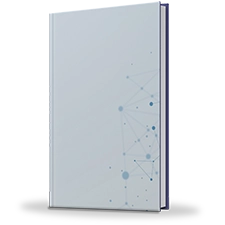Cardiac resynchronization therapy is a treatment for heart failure in patients with abnormal ventricular contraction. Heart muscles weaken due to heart failure resulting in inadequate blood pumping to other body parts and fluid accumulation begins in lungs and legs. This condition be worsens if ventricles aren’t synced with each other while beating. Cardiac resynchronization therapy (CRT) is a procedure to implant a device called a biventricular pacemaker (also called a cardiac resynchronization device) in chest to improvise contraction of heart chambers and make it normal. Pacemaker sends electrical signals to both ventricles. These signals trigger the ventricular contraction to be in coordination and improves the blood pumping as well. Often, pacemaker also contains an implantable cardioverter-defibrillator (ICD), which can deliver an electrical shock to reset the heartbeat, in situations where heart rhythm becomes extremely erratic. Cardiac resynchronization therapy also aids in reduction of symptoms of heart failure and lower your risk of heart failure and related complications, including death. Clinical studies also suggest that CRT decreases hospitalization and morbidity as well as improves in quality of life for the heart failure patients.
COVID-19 scenario analysis:
- Due to the COVID – 19 outbreak, majority of healthcare, pharmaceutical and biotechnology organizations have concentrated on treatment therapies and medication against Novel coronavirus, the medical professionals are engaged in providing COVID-19 related services, unavailability if experts to treat patients suffering from cardiac arrests
- As a result, other healthcare segments have to face negligence
- Furthermore , it has been observed after some research that people with prevalence of cardiac diseases are at higher risk for mortality and morbidity related to COVID-19 compared to the average population
- Recent studies have also revealed that COVID-19 can cause heart injury, even in people without heart abnormalities
- Henceforth, patients and the cardiac arrest treatment industry is facing struggles amid COVID-19 pandemic
- However, the demand for CRT and associated medical devices, especially pacemakers amidst COVID-19 pandemic is soaring in order to reduce the risk of systolic dysfunction, dyssynchronous ventricular contraction and ventricular arrhythmias which leads to an increase in the risk of cardiac failure
- COVID-19 can cause these conditions and worsen the scenario and to minimize their risk healthcare professionals are using CRT, thus their demand is rising
Top impacting factors: Market Scenario Analysis, Trends, Drivers and Impact Analysis
Rise in cardiovascular diseases, sedentary lifestyle with desk-bound jobs, increase in the geriatric population, technological advancements in CRT and investments in R&D activities related to cardiac diseases are the major driving forces in cardiac resynchronization therapy market growth. For instance, the American Heart Association estimates approximately 90,000 CRT devices procedures in the U.S. for year 2018. As per the Global Health and Wellness Report published in 2018, in United States approximately 40% of the adult population were diagnosed with a cardiovascular conditions with some of them leading to heart failure which resulted in higher demand for advanced and efficient treatment and upgraded cardiovascular devices to treat the patients fostering the growth of the market throughout.
Investments in R&D activities cardiac resynchronization therapy is expected to foster the cardiac resynchronization therapy market growth. In 2017, Resonate cardiac resynchronization therapy defibrillator (CRT-D) system was launched by Boston Scientific Corporation in European market. Such technological innovations in cardiac resynchronization therapy are expected to spike the growth of cardiac resynchronization therapy market. On the contrary, the lack of skilled healthcare professionals in the developing and under-developed economies to use the advanced equipment and risks surrounding the use of the equipment such as the possibility of infection during surgery, allergic reactions of the body against the device, failure of effectively treating the patient and the stringent guideline issued by regulatory authorities are hampering the growth of cardiac arrest treatment market.
Technological advancements and increasing awareness about benefits of CRT to boost market growth
Systolic heart failure is a major problem in U.S., with 550,000 new cases diagnosed and 287,000 deaths every year. Pharmacologic therapy has drastically improved outcomes in patients with heart failure, but hospitalizations from heart failure continue to increase the cost burden. Cardiac resynchronization therapy (CRT), introduced in the 1990s has been a revolution for many patients with persistent symptoms of systolic heart failure. The industry has been upgrading and innovating for providing better quality of life and higher survival chances for the patients. For instance, Medtronic announced FDA approval for their MR-Conditional CRT-Pacemakers. These MRI compatible pacemakers, are the first in the U.S. market, and will enable Medtronic to benefit through first mover advantage in the U.S. The major objective of CRT is to restore normal beating synchrony of the heart. There is strong evidence from randomized trials showing that CRT combined with selective medical therapy improves heart failure symptoms, increases blood flow and quality of life, while decreasing heart failure hospitalizations and reducing mortality. Implantable device (pacemaker) aids in efficient beating of the heart. According to research presented at the American College of Cardiology, patients with mild heart failure who integrates cardiac resynchronization therapy defibrillator device, live longer life than those implanted with a traditional implantable cardioverter defibrillator. CRT therapy works for about 70% cases of heart failure. Rising awareness about benefits is significantly helping the cardiac resynchronization therapy market to boost its growth in near future.
Sedentary lifestyle and obesity expected to fuel growth
The sedentary lifestyle is further expected to surge the market. According to World Health Organization (WHO), sedentary lifestyles proves to be fatal for around 5.3 million people every year globally, with minimum 300,000 premature deaths and $90 billion are spent in directly as healthcare costs to reduce problems caused by obesity and sedentary lifestyle yearly in the U.S. Physical inactivity causes around 2 million deaths every year forcing WHO to issue a warning regarding sedentary lifestyle being among top ten major causes of death and disability around the world. The US Department of Health and Human Service, stated only one in three children are physically active every day in the U.S. Thus, the rising sedentary lifestyle would cause cardiac problems creating opportunities for cardiac arrest market growth. Lifestyle factors such as a sedentary lifestyle, preference for junk food, smoking and unhealthy consumption of alcohol will lead to a rise in the number of cases with cardiac diseases and thus will help the cardiac resynchronization market to grow.
World Health Organization (WHO) in their report, mentioned the rate of obesity has tripled since 1975 worldwide. In 2016, over 1.9 billion adults belonging to age group 18 years or above were overweight and out of them, over one third of people were obese. These factors increase the risk of cardiovascular diseases significantly and eventually increase the chances of having a cardiac arrest. As a result, problems arising due to obesity would create growth pockets for cardiac resynchronization therapy market.
Key benefits of the report:
- This study presents the analytical depiction of the global cardiac resynchronization therapy industry along with the current trends and future estimations to determine the imminent investment pockets.
- The report presents information related to key drivers, restraints, and opportunities along with detailed analysis of the global cardiac resynchronization therapy market share.
- The current market is quantitatively analysed to highlight the global cardiac resynchronization therapy market growth scenario.
- Porter’s five forces analysis illustrates the potency of buyers & suppliers in the market.
- The report provides a detailed global cardiac resynchronization therapy market analysis based on competitive intensity and how the competition will take shape in coming years.
Questions answered in the Cardiac Resynchronization Therapy Market research report:
- Who are the leading market players active in the cardiac resynchronization therapy market?
- What are the current trends that will influence the market in the next few years?
- What are the driving factors, restraints, and opportunities in the market?
- What are the projections for the future that will help in taking further strategic steps?
Cardiac Resynchronization Therapy Market Report Highlights
| Aspects | Details |
| By Type |
|
| By Application |
|
| By End Users |
|
| By Region |
|
| Key Market Players | Cook Group Inc., Boston Scientific Corporation, Johnson And Johnson, Medtronic PLC, Abbott Laboratories, Medico S.P.A, LivaNova PLC, Microport Scientific Corporation, Lepu Medical Technology Co. Ltd., Biotronik |
Loading Table Of Content...



